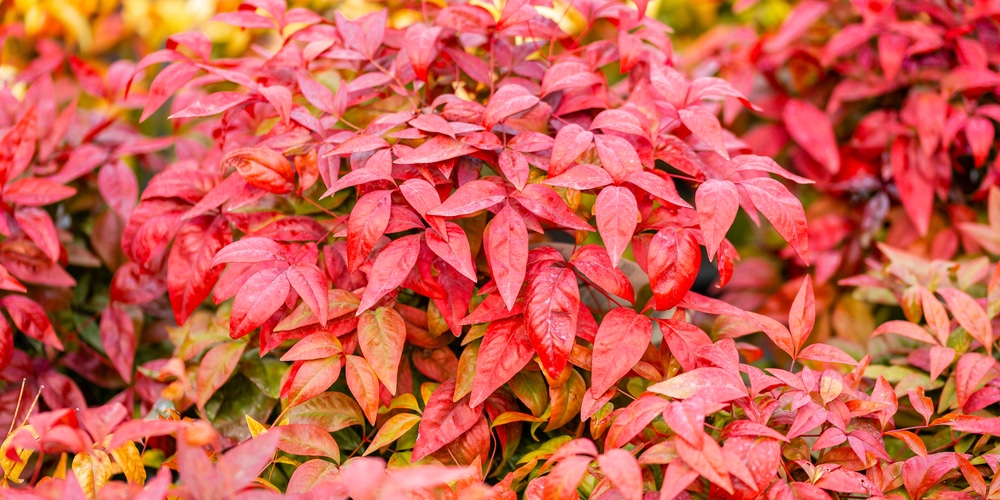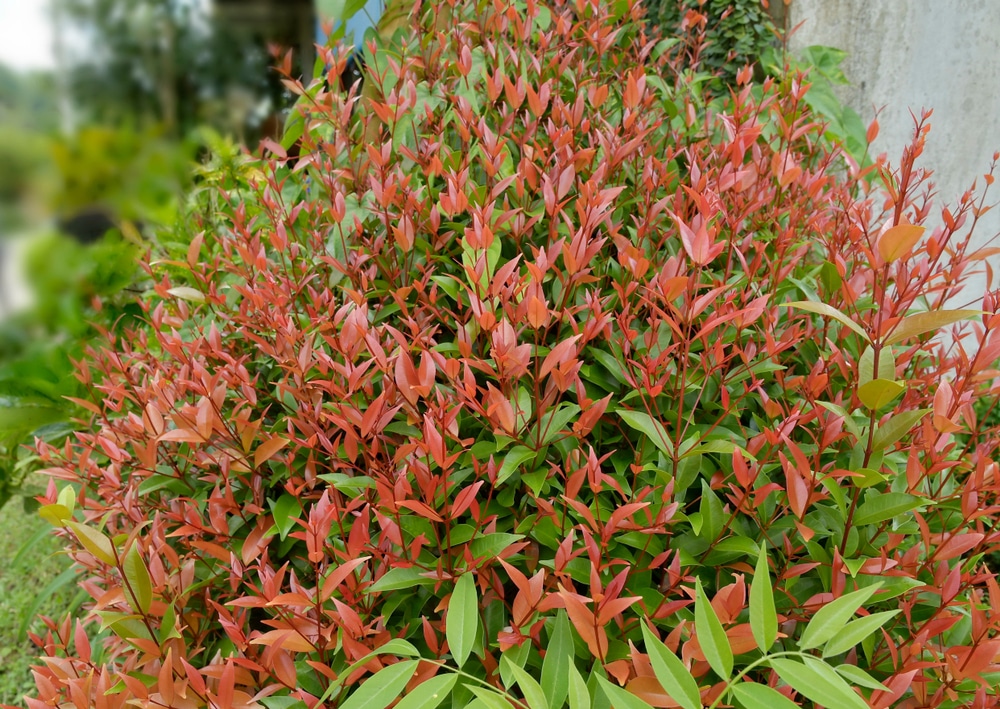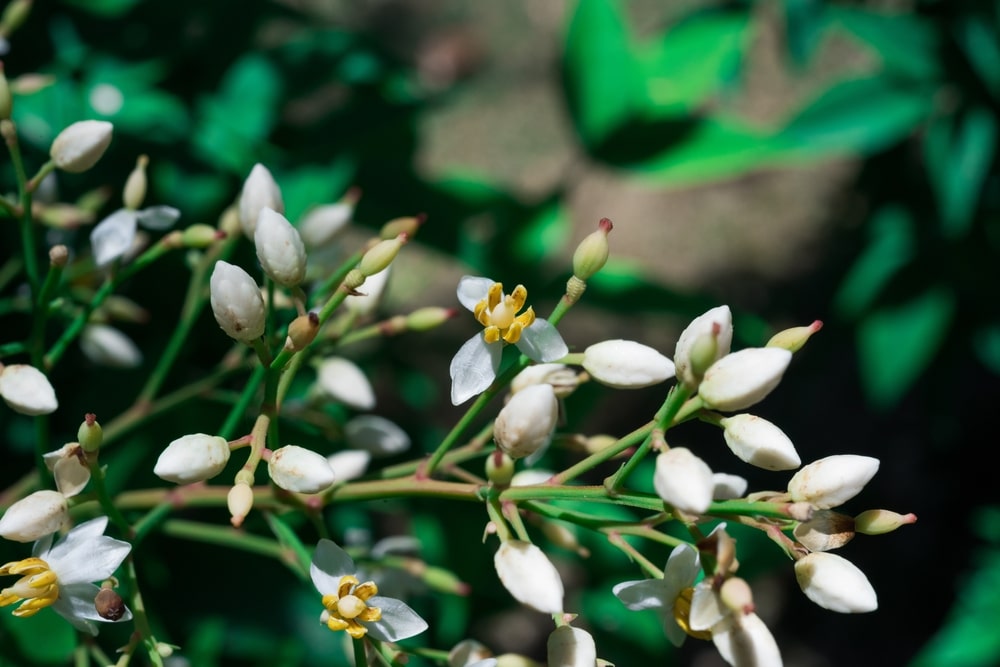Nandina, also known as heavenly bamboo, is a beautifully red-tinged plant that thrives in sunny areas and well-drained soil. It’s an evergreen plant that has a red or purple tint in spring and tiny white flowers in summer. Once fall comes, green berries appear, and the leaves turn bright red and stay that way throughout the winter.
When Should I Plant Nandina Plants?
You should plant nandinas in spring or autumn when the weather is more temperate. These planting times help the plant become established before harsh summer rays or frigid winters. A temperamental plant needs good root growth before it can survive rougher conditions.
How Should I Plant Nandinas?
There are many varieties of Nandinas, including the nandina gulf stream. You’ll want to plant nandinas 24” to 36” apart because some varieties can grow very large. When planting against a fence or house, ensure the plant has at least 3 feet to grow in any direction. You need to dig a deep hole and then water the plant consistently for a few days – the same as any other relocated plant.
Where Should I Plant Nandina Plants?
Nandinas need full sun in a well-drained spot sheltered from cold and drying winds. It’s a great bush to plant together in clumps so they can naturally protect themselves. Larger varieties grow to 6.5 feet tall, with smaller ones never reaching 3 feet.
Keep in mind which variety you have when you plant them. While you can prune nandinas, they look best while growing a little wild, thanks to their bright red autumnal colors. I recommend planting larger varieties as privacy hedges or up against fences and wooded areas while planting smaller varieties in gardens as accent pieces.
Don’t fret if you don’t have a yard or a large landscape. Nandina plants do exceptionally well when potted. As long as you put a handful of compost in the bottom and top of the pot and add some gravel for decent drainage, the plant will grow happily wherever you place it.
What Kind of Soil Do Nandina Plants Need?
Nandinas require slightly acidic soil to thrive, and you can achieve this in a few different ways. Suppose you’re worried about phosphorus levels in the ground. In that case, you’ll want to avoid store-bought fertilizers (for acidity) because they can interact with soil types differently.
You’ll want a humus soil pH of 4 to 7, though the plants can grow in clay and sandy soils when nothing else is available. Humus soil is anything rich in decomposing plant material (which is why nandinas love compost!).
Adding Sulfur
Adding sulfur chips or powder to your garden is a slow but steady way to increase the soil’s acidity levels. This acidity drop can take weeks or even months, so you may need to combine it with acidifying liquids until the soil is acidic enough to maintain an ecosystem on its own.
If you have clay soil, you’ll need more sulfur per square foot than if you have sandy soil or rocky soil.
Adding Compost
Adding composted material to your garden mimics nandina’s preferred humus soil if you live in an area where your soil is lacking in nutrients. Compost also feeds the plants other minerals such as manganese, copper, iron, and zinc.
Create Your Own Acidifying Liquid
Creating your acidifying spray should be used as a temporary measure until you can reduce the soil’s pH more naturally. However, it’s relatively simple and great in a pinch.
In moderation, you can add vinegar, lemon juice, and other acidic liquids. Dumping straight lemon juice into your soil won’t lower the pH any faster, but it will kill beneficial bacteria. Mix the acidic fluid of your choice in a 1:1 cup ratio and lightly water your plants daily over a few weeks.
Nandina plants can be low-growing hedges or tall bushes. Their red and purple leaves show colors in the fall, with most species keeping their leaves all year round. They don’t like cold winds, can’t stand wet soil, and thrive in acidic conditions. Overall, they’re an easy plant to maintain and enjoy!


